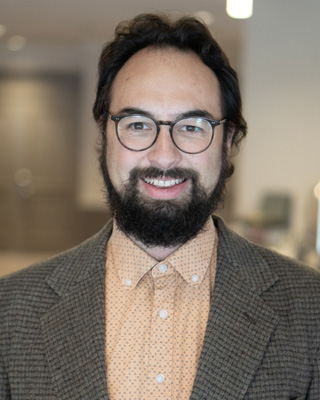Home > On-Demand Archives > Talks >
Sonifying the Tides
Remington Furman - Watch Now - DSP Online Conference 2025 - Duration: 30:13

The fascinating phenomenon of tides can be modeled and predicted relatively simply as a sum of sinusoids, with a different set of amplitudes and phases for each location. In this presentation I discuss tide prediction using mechanical and digital computers.
Tide predictions are typically plotted graphically, but they can also be sped up and converted to audible sound (a process called “sonification”) to provide a different perspective. I will discuss implementation details and play audio samples using harmonic constituent data from various NOAA tide stations.
This guide was created with the help of AI, based on the presentation's transcript. Its goal is to give you useful context and background so you can get the most out of the session.
What this presentation is about and why it matters
This talk shows how the predictable part of ocean tides can be modeled as a sum of sinusoids (harmonic constituents), how early mechanical tide computers implemented that synthesis, and how the same math can be sped up and converted into sound (sonification). For engineers, this is a compact, concrete case study that ties together classical Fourier‑style synthesis, parameter estimation from real sensors, numerical oscillator design, and perceptual data presentation. You’ll see practical tradeoffs: how to convert very slow physical signals into audible signals, how to compute many tones efficiently, and what the data limitations are when you rely on empirical harmonic fits rather than first‑principles fluid dynamics.
Who will benefit the most from this presentation
This talk is most useful to:
- Signal processing students and professionals who want a real‑world example of Fourier synthesis and constituent modeling.
- Embedded systems and audio engineers interested in efficient oscillator implementations and batch audio generation.
- Data scientists and visualization practitioners curious about sonification as an alternate modality for exploring time series.
- Anyone who wants a compact demonstration of how measurement, parameter estimation, and synthesis fit together in a deployable pipeline.
What you need to know
Key ideas you should be comfortable with before watching:
- Sinusoidal synthesis: The predictable (astronomical) part of the tide at a fixed location is well approximated by a sum of sinusoids called harmonic constituents. In compact notation the model is
\[H(t)=\sum_{k} A_k\cos(\omega_k t+\phi_k)\]
where each constituent has amplitude $A_k$, angular frequency $\omega_k$, and phase $\phi_k$. - Parameter estimation: Real tidal data is fit to this model using least‑squares regression rather than a simple DFT, because the constituent frequencies are known a priori and they do not align with uniform DFT bins. Least‑squares tolerates irregular sampling and gaps in the record.
- Beating and spectral content: Close but nonidentical frequencies (e.g., solar vs lunar components) produce beats and slow modulation. When you speed the signal up into audio, these beats and their harmonics determine perceived texture and roughness.
- Sonification choices: Converting a very slow process to audible time involves a speed‑up (time warp) and either direct frequency scaling (map constituent frequencies into the audible band) or other mappings (AM/FM, mapping amplitude to loudness). Be aware of sampling rate, aliasing, and perceptual limits.
- Efficient oscillator algorithms: Generating thousands of sinusoids can be CPU‑heavy if you call trig libs for every sample. Recurrence‑based quadrature oscillators (e.g., Levine’s oscillator) compute sine/cosine updates with a few multiplies and adds per sample and are far faster for large batches.
- Numerics and stability: When using recursive oscillators, care with initial conditions, normalization, and coefficient update when changing frequency is important to avoid drift or amplitude error.
Glossary
- Harmonic constituent — A single sinusoidal component (amplitude, frequency, phase) used to model the tidal signal at a location.
- Sonification — Conveying data via sound instead of (or in addition to) visual plots.
- Least‑squares fit — A regression method that estimates constituent amplitudes and phases by minimizing squared error against measured water‑level samples.
- Fourier synthesis — Reconstructing a signal by summing sinusoidal components (same idea used for harmonic constituents).
- Beat frequency — The slow amplitude modulation that results when two nearby frequencies interfere; perceptually important when converting to audio.
- Overtide / Overtone — A harmonic of a base tide frequency; in tidal science these can be generated by nonlinear interactions.
- Quadrature oscillator — A recursive algorithm that produces sine and cosine samples (in quadrature) efficiently per time step.
- Sampling rate — Number of audio samples per second used when rendering sonified output; determines time‑to‑audio mapping and aliasing constraints.
- DFT bin mismatch — The situation where signal frequencies do not coincide with discrete Fourier transform bins, motivating non‑DFT estimation methods.
- Topography (in tide context) — Coastline and seafloor shape that shifts the local amplitude and phase of constituents; treated empirically in harmonic models.
I just published a blog post that addresses a question I received about digital oscillator stability during the Signal Processing Summit:
https://remcycles.net/blog/viete_cheb.html
I am here and ready to answer questions throughout the week!


I published my C code for sonifying the tides here:
https://remcycles.net/blog/tides_c.html
Please do let me know if you have questions or comments either here or by email.